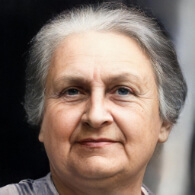Indirect Presentation (Montessori)
In Montessori education, an Indirect Presentation refers to a method of teaching that leverages the absorbent nature of a young child's mind, where every action or event can be viewed as a lesson.[1] Children learn not only from direct instruction, but also by watching other children work or by observing a lesson given to another. This approach extends to the child's social environment as well - children can absorb behavioral patterns and language from their family, peers, and even media such as TV.
Montessori Quotes
- "The first aim of the prepared environment is, as far as it is possible, to render the growing child independent of the adult."[2]
- "Education is a natural process carried out by the child and is not acquired by listening to words but by experiences in the environment."[3]
Research and Critiques
- Pros: The concept of indirect presentation underscores the role of observational learning in children's development. It highlights the importance of the environment and social interactions in learning, which aligns with research on social learning theory and the benefits of peer learning.[4]
- Cons: Critics argue that indirect presentation might lead to inconsistent or incorrect learning, as the child might misunderstand or misinterpret what they observe. They also suggest that some concepts or skills might require more direct and structured instruction.[5]
Comparisons to Other Methods
While traditional education often relies heavily on direct instruction, Montessori education emphasizes the role of observational learning and the environment, thereby fostering a more active and self-driven learning process.[6]
See Also
Glossary of Montessori Terms
The Glossary of Montessori Terms is a collection of specific terms and vocabulary that are related to the Montessori method of education, primarily focusing on the theory and practice for children aged 3 to 6. The jargon used by Montessori educators offers a unique insight into child development as discussed by Maria Montessori. The 'Montepedia Glossary of Montessori Terms' originated from a glossary that was compiled by the late Annette Haines from the Montessori Training Centre of St. Louis, at the request of Molly O'Shaughnessy from the Montessori Centre of Minnesota. The reason behind the creation of this glossary was to supplement O'Shaughnessy's lecture at the Joint Annual Refresher Course that took place in Tampa, Florida, in February 2001.[7] The glossary has since been expanded and updated with additional 'Montessori Terms'.
- 3-Hour Work Cycle
- Absorbent Mind
- Adaptation
- Adolescence
- Albums
- Advisor
- Analysis of Movement
- Casa dei Bambini
- Children of the Earth
- Children's House
- Choice
- Classification
- Concentration
- Concrete to Abstract
- Control of Error
- Coordination of Movement
- Cosmic Education
- Creativity/Imagination
- Cycle of Activity
- Development of the Will
- Deviations
- Didactic Materials
- Director
- Discipline from Within
- Earth Child
- Elementary Classroom
- Erdkinder
- Exercises of Practical Life
- False Fatigue
- Freedom of Choice
- Freedom within Limits
- Grace and Courtesy
- Great Stories
- Ground Rules
- Guide
- Help from Periphery
- Human Tendencies
- Imagination
- Independence
- Indirect Preparation
- Indirect Presentation
- Isolation of a Difficulty
- Intrinsic Motivation
- Job
- Kinderhaus
- Language Appreciation
- Language Acquisition
- Learning Explosions
- Materials
- Materialised Abstractions
- Mathematical Mind
- Maximum Effort
- Mixed Ages
- Montessori Materials
- Nido
- Montessori Materials
- Normalization
- Obedience
- Peace
- Personality
- Planes of Development
- Points of Interest
- Practical Life
- Phonemic Awareness
- Phonics Instruction
- Phonological Awareness
- Prepared Environment
- Presentation
- Primary Classroom
- Psychic Embryo
- Reading Comprehension
- Repetition
- Respect
- Self-Discipline
- Self-Regulation
- Sensitive Periods
- Sensorial Materials
- Simple to Complex
- Socialization
- Society by Cohesion
- Sound Games
- Three-Hour Work Cycle
- Valorisation
- Vocabulary Enrichment
- Work
Please help to translate this page into your local language
References
- ↑ Montessori, M. (1966). The Secret of Childhood. Ballantine Books.
- ↑ Montessori, M. (1948). To Educate the Human Potential. Clio Press.
- ↑ Montessori, M. (1948). To Educate the Human Potential. Clio Press.
- ↑ Lillard, A. (2017). Montessori: The Science Behind the Genius. Oxford University Press.
- ↑ Egan, K. (2002). Getting it wrong from the beginning: Our progressivist inheritance from Herbert Spencer, John Dewey, and Jean Piaget. Yale University Press.
- ↑ Mooney, C. (2013). Theories of Childhood, Second Edition: An Introduction to Dewey, Montessori, Erikson, Piaget & Vygotsky. Redleaf Press.
- ↑ Haines, A. (2001). Glossary of Montessori Terms. Montessori Training Centre of St. Louis.
